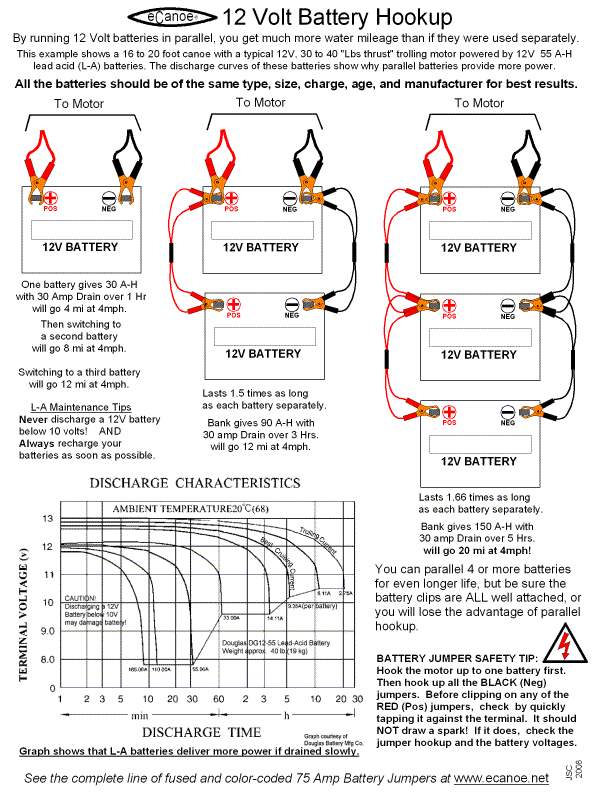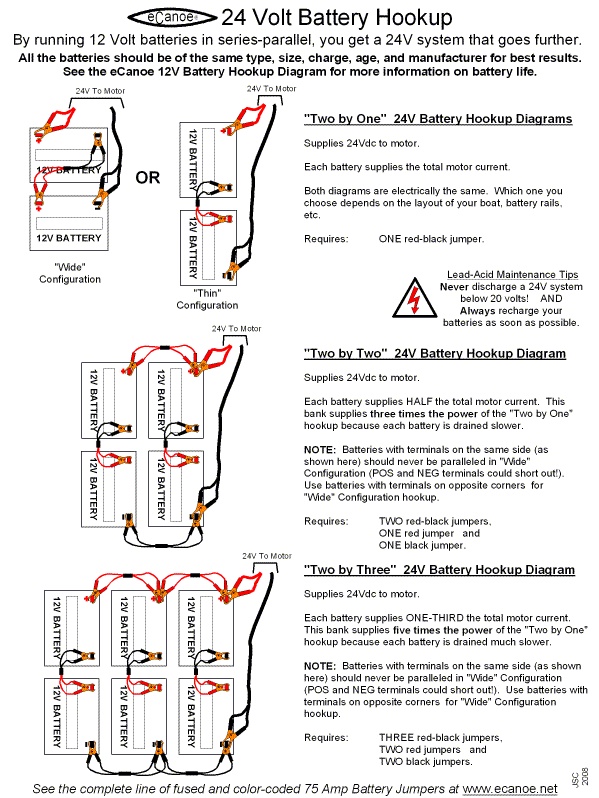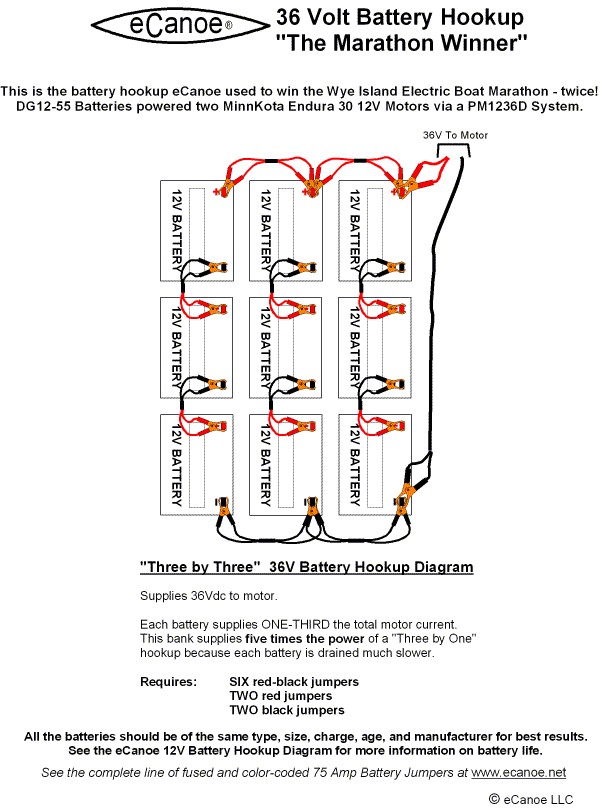Battery Realities
or
Can't get the lead out yet!
Updated 9 Aug 2015
Battery power drives you down the water, and watercraft require a lot of power. Thus you better learn about your batteries when deciding to go electric. The battery type, size, power ratings, and maintenance are extremely important to deliver the power to get you out there and back home. Pick a battery too small or of the wrong type and you will end up paddling home. Pick one too big and you may hurt yourself getting it in or out of the boat. Treat them badly by discharging too far or not recharging soon after use and your batteries will be ruined.
Although there is a big research effort to develop lighter, more powerful and easier to recharge batteries such as lithium-ion and other exotic types, the reality as of 2010 is that “old-fashioned” Lead-Acid (L-A) batteries remain the work horse of the boating industry because that technology is well-developed, rugged, recyclable, and most affordable. For those reasons, let us concentrate on how to purchase, use, recharge and care for L-A batteries in this article. As other practical and marine-qualified batteries or fuel cells become available in the future, eCanoe will show you how to use them safely for small boat e-cruising.
Practical
Lead-Acid Batteries for Small Boats
The manufacture of
lead-acid batteries is a mature technology, and has reached the lower limits of
size, weight, and cost for a rugged rechargeable power source.
Very large batteries that allow cruising for many hours are available, such as size 4D or 8D, but they weigh 140 to 170 lb each and may require a winch to get them safely into the boat – not a practical solution when loading a canoe at an undeveloped boat ramp. These large batteries are best used in sailboats or other enclosed boats where they can be installed and left in place during trailer transport, launch, and cruising. Properly rated recharging systems are usually installed in these boats for on-shore charging from 120-240Vac power lines.
For “car-top” boating, where the craft is carried empty on the car or truck, lifted into the water by hand, and loaded with motor, batteries, and gear at the launch site, the weight and design of the battery are critical. These batteries should not weigh over 50 lb each if they are to be handled by one person, should be sealed non-spill types, and should have a strong strap or handle for lifting. The terminals should also have insulating covers to protect against accidental short circuits that can ruin a battery or cause physical injury from sparks and overheating. Some “Group 24”-sized batteries can meet these requirements, and are available through many auto and boating stores and catalogs. Group 24 batteries take up 10-1/4" by 6-7/8" (26 x 18cm). Be sure to get “deep-discharge” batteries rather than the more common starting batteries that are made with thinner, less durable lead plates. Better batteries will weigh more (more lead)!
My favorite batteries for e-cruising are designed for safe use in electric wheelchairs, scooters, and shopping carts. There are several similar brands available, but I will use the DG12-55 Model from the Douglas Battery Mfg. Co (Winston-Salem, NC) as an example because it was available locally to me and has good specifications available. “DG” stands for Douglas-Guardian, “12” means 12 volts, and “55” designates it holds 55 Amp-Hours of power (if drained at 2.75 Amps over 20 hours). They weigh about 40 lb each and take up a space measuring about 9 by 5.5 inches (23 x 14 cm) on the floor of the boat. Two fold-up handles are provided for lifting. They contain dilute sulphuric acid electrolyte completely immobilized in an absorbent glass mat between the plates, which make a very rugged battery that can take shock and vibration better than a liquid-cell battery.
THE BOTTOM LINE: To get enough power for long cruises with lead-acid batteries you can lift yourself, it is best to hook up two or more batteries in parallel. Here's how to do it - safely...

Click here to download this 12V Battery Hookup Diagram as a PDF file (0.6 MB).

Click here to download this 24V Battery Hookup Diagram as a PDF file (42 KB)

Click here to download this 36V Battery Hookup Diagram as a PDF file (30KB)